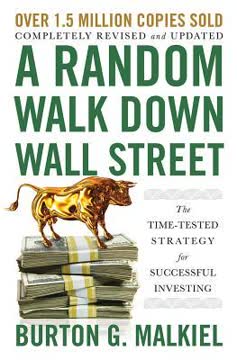Key Takeaways
1. Entrepreneurship through acquisition: A viable path to business ownership
Acquisition entrepreneurship is not without its challenges. That's why you need to make sure you're suited to it and then approach your search, deal negotiation, and transition to leadership in a systematic way.
Skills and attributes required. Successful acquisition entrepreneurs possess a combination of managerial skills, confidence, persuasiveness, and persistence. They must be enthusiastic learners, able to quickly grasp unfamiliar industries and business models. Additionally, they should be prepared for the stress and pressure that comes with being the ultimate decision-maker.
Trade-offs to consider. While acquisition entrepreneurship offers immediate impact and flexibility, it also comes with increased pressure and responsibility. Entrepreneurs must weigh the benefits of professional independence against the loss of corporate structure and support. The financial rewards can be significant, but they are directly tied to the business's performance.
Systematic approach. To succeed in acquisition entrepreneurship:
- Conduct a thorough self-assessment
- Commit to a full-time search process
- Develop a rigorous evaluation framework
- Prepare for intensive due diligence
- Plan for a smooth leadership transition
2. The search process: Commitment, focus, and efficiency are key
Whether you're working alone or with a partner, you need to commit to searching full-time for six months to two years.
Full-time commitment. The search for the right business to acquire is a demanding process that requires undivided attention. Entrepreneurs must be prepared to dedicate significant time and resources to identify, evaluate, and pursue potential acquisition targets.
Funding the search. Two primary options exist for financing the search process:
- Establishing a search fund: Raising capital from investors to cover living expenses and search costs
- Self-financing: Limiting expenses and the scope of the search to reduce financial burden
Efficient filtering. Given the large number of potential acquisition targets, entrepreneurs must develop a systematic approach to quickly evaluate prospects. Key criteria to consider include:
- Profitability and financial stability
- Established market presence
- Revenue and cash flow within desired range
- Alignment with entrepreneur's skills and experience
- Lifestyle fit (location, industry, required travel)
- Indicators of enduring profitability
- Seller's genuine intention to sell
3. Evaluating prospects: Look for enduringly profitable businesses
We recommend focusing on companies with annual revenues of $5 million to $15 million and annual cash flows of $750,000 to $3 million.
Target business profile. Acquisition entrepreneurs should seek out established, consistently profitable businesses rather than high-risk startups or turnaround opportunities. These "enduringly profitable" enterprises offer stability and the potential for value creation through improved management practices.
Indicators of enduring profitability:
- Steady, loyal customer base
- Strong reputation in the industry
- Deep integration with customers' systems
- High switching costs for customers
- Limited competition
- Strong profit margins
- Low customer churn
Financial considerations. Focus on businesses with annual revenues between $5 million and $15 million, and cash flows between $750,000 and $3 million. This range typically offers attractive acquisition prices while providing sufficient scale for potential growth and value creation.
4. Negotiating the deal: Balance price, terms, and seller motivation
If your offer is accepted—or accepted after negotiations—you'll enter a period of confirmatory due diligence in which the company's records will be fully open to you.
Preliminary due diligence. Before making an offer, conduct focused research to verify the seller's claims and assess the business's true potential. This includes analyzing historical financial data, projecting future earnings, and evaluating current business practices.
Valuation and offer. Use your financial projections to determine a fair offer price, typically between three to five times the current EBITDA. Be prepared to justify your valuation to potential investors and lenders.
Negotiation strategies:
- Understand the seller's motivations and expectations
- Emphasize your commitment to preserving the business's legacy
- Be patient and maintain open communication throughout the process
- Be prepared to renegotiate terms if unexpected issues arise
Confirmatory due diligence. Once your offer is accepted, work with accountants and attorneys to thoroughly examine the company's records, looking for any inconsistencies or potential problems. This typically lasts around 90 days and is crucial for finalizing the deal.
5. Transitioning to leadership: Build relationships and control cash flow
After closing the sale, you should focus on four tasks: introducing yourself to all your managers and employees, meeting with external stakeholders, communicating the transition plan to everyone, and taking control of your cash flow.
Building relationships. As the new owner, prioritize meeting with employees, customers, suppliers, and community members. Reassure staff about job security and emphasize your commitment to the company's success. Use these interactions to gather valuable insights about the business and potential areas for improvement.
Communication strategies:
- Be clear about your goals and expectations
- Encourage open dialogue and questions
- Explain the decision-making process during the transition
- If applicable, clarify the former owner's ongoing role
Cash flow management. Maintaining strong cash flow is critical for newly acquired businesses, especially those with acquisition debt. Implement tight controls:
- Personally approve all payments
- Review accounts receivable balances weekly
- Create and monitor a 90-day rolling cash flow forecast
Expect challenges. The first few months of ownership often bring unexpected issues, such as employee turnover or customer concerns. Stay focused on your long-term vision while addressing immediate problems with patience and determination.
6. The founder's dilemma: Choosing between wealth and control
Founders eventually realize that their financial resources, ability to inspire people, and passion aren't enough to enable their ventures to capitalize fully on the opportunities before them.
The fundamental trade-off. As startups grow, founders face a critical choice between maximizing their wealth and maintaining control of their company. This dilemma arises from the need to raise capital and bring in experienced executives to scale the business.
Wealth maximization:
- Involves giving up equity to attract co-founders, key hires, and investors
- Often requires stepping down as CEO in favor of a more experienced leader
- Typically results in a more valuable company and a larger financial gain for the founder
Control retention:
- Allows founders to maintain decision-making authority and CEO position
- Often requires bootstrapping or limiting outside investment
- May result in slower growth and a less valuable company overall
Founder motivations. Understanding their true motivations can help founders make this difficult decision:
- Those primarily motivated by wealth should be prepared to give up control
- Those who prioritize being "king" should focus on businesses that require less capital and leverage their existing skills
7. Scaling challenges: Adapting leadership as the company grows
At that point, leaders face a different set of business challenges. The founder has to build a company capable of marketing and selling large volumes of the product and of providing customers with after-sales service.
Evolving leadership needs. As startups transition from product development to growth and scaling, the skills required of a CEO change dramatically. Founders must recognize that their initial strengths may become liabilities in this new phase.
New challenges in scaling:
- Building marketing and sales capabilities
- Developing customer service operations
- Managing more complex finances
- Creating formal processes and organizational structures
- Delegating responsibilities and building a management team
Founder limitations. Many founders lack the experience or skills to effectively lead their companies through these changes. This often leads to tension with investors and boards who recognize the need for new leadership.
Potential solutions:
- Founders can proactively seek to develop new skills
- Boards can help founders transition to new roles that leverage their strengths
- In some cases, bringing in a professional CEO while keeping the founder involved in a different capacity can be the best solution for the company's growth
8. Managing investor relationships: Balancing autonomy and resources
Founders don't let go easily, though. Four out of five entrepreneurs, my research shows, are forced to step down from the CEO's post.
The power shift. As startups raise outside capital, founders often lose control of their boards and, consequently, their positions as CEO. This transition can be particularly challenging for founders who are emotionally attached to their companies.
Investor motivations:
- Maximize return on investment
- Ensure the company has the leadership necessary to scale
- Mitigate risks associated with inexperienced management
Strategies for founders:
- Be transparent about your goals and motivations from the outset
- Choose investors whose vision aligns with yours
- Develop skills that will be valuable as the company grows
- Be open to transitioning to a new role that leverages your strengths
Board dynamics. Understanding how board control shifts with each round of funding can help founders prepare for potential leadership changes. Cultivating strong relationships with board members and demonstrating adaptability can increase a founder's chances of remaining in a leadership role.
9. Building trust and safety in online marketplaces
To properly engender trust and overcome fears, marketplaces must go beyond R&R systems and accept some de facto responsibility for transactions.
The trust challenge. Online marketplaces face unique challenges in establishing trust between buyers and sellers, particularly when transactions involve high-value items or recurring interactions.
Limitations of ratings and reviews:
- Self-selection bias in who leaves reviews
- Potential for manipulation or fake reviews
- Insufficient for high-stakes transactions
Effective trust-building strategies:
- Provide insurance for transactions
- Vet and certify participants
- Offer dispute resolution services
- Implement escrow payment systems
Balancing platform responsibility. While marketplaces are technically just facilitators, users often hold them partially responsible for bad experiences. Accepting some level of responsibility can actually build trust and user loyalty.
Combating disintermediation. Instead of punitive measures, focus on creating value that incentivizes users to stay on the platform:
- Offer unique services or protections
- Provide tools that enhance the user experience
- Ensure competitive pricing and fees
10. The lean startup methodology: Experimentation over planning
Instead of executing business plans, operating in stealth mode, and releasing fully functional prototypes, young ventures are testing hypotheses, gathering early and frequent customer feedback, and showing "minimum viable products" to prospects.
Challenging conventional wisdom. The lean startup approach recognizes that startups operate in conditions of extreme uncertainty, making traditional business planning ineffective.
Key principles of the lean startup:
- Use a business model canvas instead of a detailed business plan
- Test hypotheses through customer development and feedback
- Practice agile development with rapid iteration
Benefits of the lean approach:
- Reduces waste of time and resources
- Allows for faster pivots based on market feedback
- Increases chances of finding product-market fit
Limitations to consider:
- May not be suitable for all industries or business models
- Can be challenging to balance rapid iteration with long-term vision
- Requires a mindset shift for traditionally trained managers and investors
Adoption beyond startups. Large companies are increasingly applying lean startup principles to foster innovation and adapt to rapidly changing markets. This approach can help established firms become more agile and customer-focused.
Last updated:
FAQ
What's "HBR's 10 Must Reads on Entrepreneurship and Startups" about?
- Definitive Collection: This book is a curated collection of essential articles from the Harvard Business Review, focusing on entrepreneurship and startups.
- Diverse Topics: It covers a wide range of topics critical to entrepreneurs, including leadership, business planning, innovation, and venture capital.
- Expert Insights: The book features insights from renowned experts and successful entrepreneurs, providing practical advice and strategies for both aspiring and experienced business leaders.
Why should I read "HBR's 10 Must Reads on Entrepreneurship and Startups"?
- Comprehensive Guide: It offers a comprehensive guide to understanding the complexities of starting and growing a business.
- Practical Advice: The book provides actionable advice and strategies that can be applied to real-world business challenges.
- Expert Perspectives: Readers gain access to the thoughts and experiences of successful entrepreneurs and business leaders, enhancing their understanding of the entrepreneurial landscape.
What are the key takeaways of "HBR's 10 Must Reads on Entrepreneurship and Startups"?
- Entrepreneurial Leadership: The importance of hiring and developing entrepreneurial leaders who thrive in uncertainty and possess strong persuasive skills.
- Business Planning: The need for a flexible business plan that focuses on people, opportunity, context, and risk management rather than just financial projections.
- Lean Start-Up Methodology: Emphasizes experimentation, customer feedback, and iterative design to reduce the risks associated with launching new ventures.
What is the Lean Start-Up methodology discussed in the book?
- Experimentation Over Planning: The lean start-up approach prioritizes experimentation and learning over detailed planning and forecasting.
- Customer Feedback: It emphasizes gathering early and frequent customer feedback to refine products and business models.
- Iterative Design: The methodology involves developing minimum viable products and iterating based on customer responses to improve offerings.
How does "HBR's 10 Must Reads on Entrepreneurship and Startups" address venture capital myths?
- Not Primary Funding Source: The book dispels the myth that venture capital is the primary source of start-up funding, highlighting alternatives like angel investors and crowdfunding.
- Risk and Returns: It challenges the perception that VCs take significant risks and generate spectacular returns, revealing that many funds underperform the market.
- Mentoring and Innovation: The book questions the extent of mentoring provided by VCs and points out that innovation often comes from outside the VC industry.
What advice does the book offer on writing a great business plan?
- Focus on Key Factors: A great business plan should focus on people, opportunity, context, and risk rather than detailed financial projections.
- Realistic Projections: It should include realistic assessments of market size, growth potential, and competitive landscape.
- Dynamic Document: The plan should be a living document that evolves as the business learns and adapts to new information and circumstances.
What insights does the book provide on entrepreneurial leadership?
- Thriving in Uncertainty: Entrepreneurial leaders excel in uncertain environments and are motivated by novelty and exploration.
- Passion for Ownership: They have a strong desire to own and drive projects, often preferring hands-on involvement.
- Persuasive Skills: Effective entrepreneurial leaders are natural salespeople who can inspire and convince others to support their vision.
How does the book describe the challenges of founder transitions?
- Emotional Attachment: Founders often struggle with letting go due to emotional attachment and overconfidence in their leadership abilities.
- Need for New Skills: As companies grow, they require different management skills that founders may not possess, leading to leadership transitions.
- Rich vs. King Dilemma: Founders face a choice between maximizing wealth (rich) and maintaining control (king), which influences their decisions and company outcomes.
What are the benefits and challenges of acquisition entrepreneurship according to the book?
- Instant Impact: Acquisition entrepreneurship allows individuals to immediately lead and make impactful decisions in an existing business.
- Flexible Lifestyle: It offers a more flexible lifestyle compared to start-ups or large corporations, with the entrepreneur setting the rules.
- Search and Transition: The process involves a diligent search for the right business, negotiating a fair deal, and transitioning into leadership, which can be challenging.
What role does innovation play in "HBR's 10 Must Reads on Entrepreneurship and Startups"?
- Central Theme: Innovation is a central theme, with discussions on how entrepreneurs can create and sustain innovative business models.
- Lean Start-Up Influence: The lean start-up methodology is highlighted as a way to foster innovation through rapid experimentation and customer feedback.
- Venture Capital and Innovation: The book also examines the role of venture capital in supporting or hindering innovation within start-ups.
What are some of the best quotes from "HBR's 10 Must Reads on Entrepreneurship and Startups" and what do they mean?
- "Entrepreneurs aren’t always more creative than general managers, but they enjoy pushing boundaries." This quote emphasizes that while entrepreneurs may not be inherently more creative, their willingness to explore and challenge norms sets them apart.
- "The lean start-up approach will help them meet it head-on, innovate rapidly, and transform business as we know it." This highlights the transformative potential of the lean start-up methodology in driving rapid innovation and business evolution.
- "Choosing between money and power allows entrepreneurs to come to grips with what success means to them." This quote reflects the critical decision founders must make between seeking wealth and maintaining control, shaping their definition of success.
How does "HBR's 10 Must Reads on Entrepreneurship and Startups" address the concept of blitzscaling?
- Rapid Growth Focus: Blitzscaling is about rapidly building a company to serve a large market, becoming the first mover at scale.
- Networked Age: The book discusses how globalization and technology necessitate faster scaling to stay competitive.
- Organizational Challenges: It highlights the managerial inefficiencies and cultural challenges that come with blitzscaling, emphasizing the need for adaptability and focus.
Review Summary
HBR's 10 Must Reads on Entrepreneurship and Startups receives mixed reviews, with an overall rating of 3.83/5. Readers appreciate the diverse collection of articles on entrepreneurship, startups, and venture capital. Some find the content informative and insightful, particularly articles on lean startup methodology, growing without investors, and blitzscaling. However, others criticize the book for being outdated, dry, or lacking new information. The book is generally recommended for novice entrepreneurs or students, but experienced readers may find limited value.
Similar Books










Download PDF
Download EPUB
.epub digital book format is ideal for reading ebooks on phones, tablets, and e-readers.














